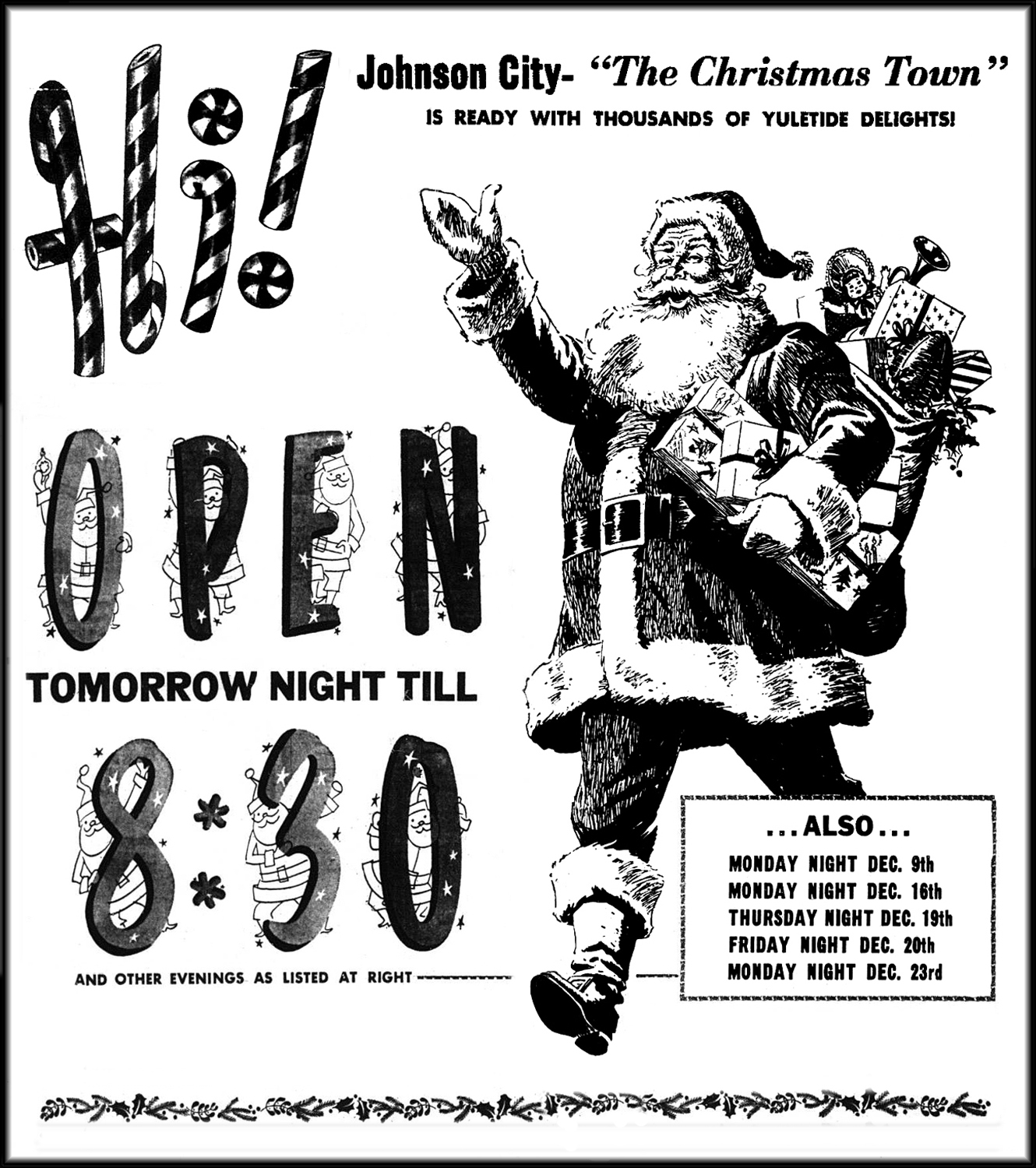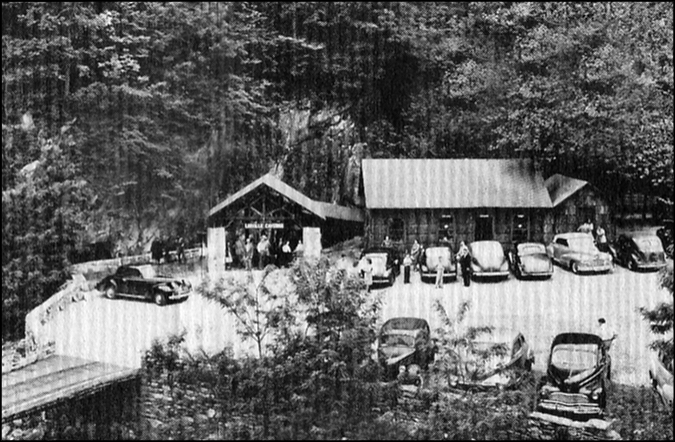The advertisement that accompanies today's column came from a Dec. 1, 1957 Johnson City Press-Chronicle. Note that the former “Johnson's Depot” carried the tag, “The Christmas Town,” stating that the city was ready with thousands of Yuletide delights!” Everywhere shoppers glanced, they saw dazzling, glittering arrays of gifts to put under their Christmas tree; toys to make a child's eyes grow wide with excitement; brilliant glowing lights and sparkling ornaments for decoration; Santa's Yule-tide pack overflowing with magic from all over the world to make Christmas the happiest, most thrilling they'd ever had; a need to hurry because time was a-wasting; join the holiday shopping throng now without delay.

Twenty-three downtown stores agreed to keep their businesses open until 8:00 p.m. on six nights between December 9 and December 23: Advance Store, Carder Hardware, Charles Store, Cooper's Office Equipment Co., Davis-Mottern Jewelers, Dosser's, Free Service Tire Stores, Gregg Electric Co., Hannah's, H.E. Hart Jewelers, Kyker Furniture Co., London Hardware, Masengill's, Parks-Belk Co., Penney's, Sears-Roebuck Co., Singer Sewing Machine Co., Sterchi's, The Jewel Box, The Music Mart, The Nettie Lee Ladies Shop, The Nettie Lee Boy & Girl Shop and Wallace's.
The Chamber of Commerce placed in the newspaper a message of thanks” to the hundreds of business firms and thousands of Johnson Citians whose support of the Chamber program had made this a most successful and joyous year.
George Kelly, in his editorial 12 months prior, challenged the local business and professional people to “come off the sidelines and get in the game.” He noted that the Chamber was the organization in which business men and others pool their experiences and talents for the economic good of the community.”
The results that year were quite impressive: “three new industries; an Industrial Park; called on 157 industrial prospects in 16 states; conducted a Dairy Institute; conducted two sales clinics; conducted “Business Education Day” and “Education Business Day”; approved $2 million Industrial Bond Issue, entertained college freshmen enrolled at ETSC, Milligan College and Steed College of Technology; and continuous activity in many areas of community development such as highways, fire prevention, health, sanitation, tourism, parking, retail, aviation, transportation, conservation, legislation, inter-city relations, traffic and safety and others.
The organization further stated that “It is our hope that 1958 will be another 'milestone year' in the annals of the progress of Johnson City.
The Chamber of Commerce concluded with “Best Wishes for a Merry Christmas and a Happy New Year. This message was sponsored by the Johnson City Chamber of Commerce by the following progressive, civil minded firms:
Browns Mill Company, Cash & Hall Wholesale Grocery Co., Diamond Cab Co., Gregg Electric Co., Hannah's, Holston Distributing Co., Home Federal Saving and Loan Association, Orange Crush Bottling Co., Harman Ice and Coal Co, Lodge Service Station, Mullins Hardware Co. Nave's Automotive Brakes, Wheel and Supply Co., Pet Dairy Products Co., Summers Hardware & Supply Co., Smith Higgins Co., Wofford Brothers, Radio Station WETB, Red Band Enriched Flour, Johnson City Press-Chronicle and Tennessee Motor Co.



.jpg)




